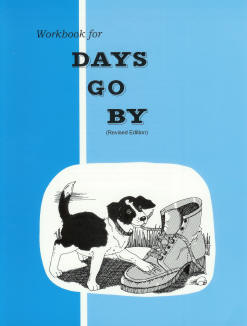
Grade 1 Climbing to Good English - Set
- Paper cover
- 1.72 lbs
Item #37-21--
| This set includes: | # in My Cart | ||
|---|---|---|---|
| Pupil Workbook | $8.50 | ||
| Teacher's Edition | $13.00 | ||
| This set includes: 2 items | |||
This Schoolaid Language Series is designed by Schoolaid to complement the Pathway Reader Series by extending in phonics and reading comprehension, grammar and composition.
To the Teacher
English in first grade is more or less an extension of reading and phonics. Phonics helps pupils to read; English helps them to write what they or others will read. In teaching pupils to express themselves in writing, English uses the concepts taught in phonics while adding some of its own.
We have tried to make this book fit both slow and fast pupils. Each page has plenty of work for the average student. Faster pupils may need extra busywork. If you have a slower pupil or pupils, her are some suggestions: Make sure they understand. Help them get started by discussing some of the answers orally or, if necessary, help them fill in a few. (Average pupils should need little help to get started on most of the pages.) Or you might assign only part of the page if you have an extra slow pupil (but move him on through the book one page a day with the others). Sometimes you may want to get a faster pupil, or an older, one , to help a slower one. As the teacher, you will need to use your judgement in assigning each page. Pupils are not learning as they should if they get bogged down and discouraged. Nor are they learning as they should if they get so much help that they become dependent. Doing work independently may mean making a few mistakes, but this trains pupils to think for themselves and is an important part of the learning process.
The first part of this book is phonics practice. As soon as pupils have learned the vowels a, u, i, and o in phonics (about the fourth week of school in Learning through Sounds Book 1), they are ready to begin this book. Pages one through eleven give practice in listening for the sounds of letters and writing them. Children are not expected to read all the words on those first pages. The words have been put there to show children where the sound is heard—beginning, middle, or end. Here they are getting first hand experience in making words, even though they can't read them yet. We are here preparing to lay a solid foundation of reading and thinking.
Pages 12 through 26 have word starter practice, and drill with color words and categories. Pupil usually have no problem with this kind of work if they have had it in phonics. If your pupils find it too hard, let others help where necessary., but do not skip this practice. (Picture identification for these pages follows.)
On page 27 pupils start using the words they have learned to sound out in phonics. They get practice in sounding out words and drill in word meanings as they match each word with its picture. Then they reinforce this by writing the words and get the necessary penmanship practice at the same time. They also start writing sentences right from the start. Even though the sentences are just three-word sentences, it is teaching the concept of expressing a complete thought in a proper sentence.
Climbing to Good English 1 is designed to travel hand in hand with Learning Through Sounds, but, with some teacher planning, it can be used quite well with other reading and phonics programs. One page is provided for each day of school, starting the fourth or fifth week of the school term. Instructions for working each page are right on the pupil's page—there is no special teacher's edition. We recommend that a teacher fill out a pupil's book with answers for a personal teacher's edition. This is quite handy for both the teacher and anyone who may help with correcting the pupils' books. In fact, it's more than handy—it's a necessity for good teaching.








